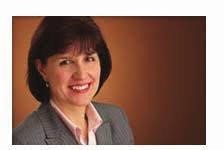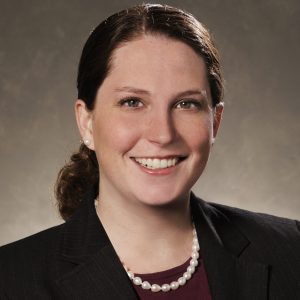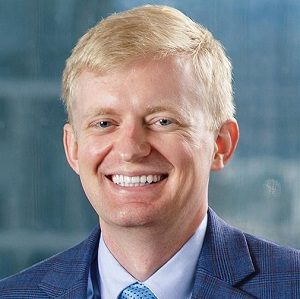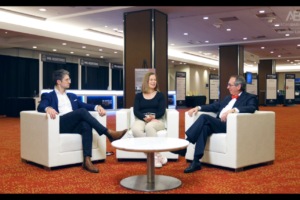CURRENT MONTH (June 2022)
County’s Tax Lien Foreclosure Avoidable as a Fraudulent Transfer
The Supreme Court broadly protected mortgage foreclosure sales conducted in accordance with applicable state law from avoidance as constructive fraudulent transfers (based on receipt of less than reasonably equivalent value from the sale) in BFP v. Resolution Trust Corp., 511 U.S. 531 (1994). Ever since then, owners whose properties have been foreclosed have litigated over the scope of BFP’s protection in subsequently filed bankruptcy cases. Recently, the Court of Appeals for the Second Circuit grappled with such an issue in Gunsalus v. County of Ontario, New York, No. 20-3865-bk (2d Cir. June 27, 2022). There, a couple that owned a house in Ontario County free and clear of any mortgage failed to timely pay real estate taxes on the property, subjecting the property to a tax lien in the amount of $1,290. The County provided all required notices and then filed an in rem tax foreclosure action under New York’s Real Property Tax Law. The owners contested the foreclosure action, but lost, and the state court entered a final judgment granting title to the County. After acquiring title, the County scheduled an auction of the property and sold it for $22,000. Although the unpaid tax bill had only been $1,290, New York law permitted the County to pocket the difference, which it did. The owners then filed a chapter 13 case and a plan that provided for payment in full of the tax debt plus 12% interest. They filed an adversary proceeding to avoid the tax foreclosure as a constructively fraudulent transfer. The Bankruptcy Court dismissed the fraudulent transfer action in reliance on BFP, holding that it entitled the County to a presumption that the foreclosure provided reasonably equivalent value. The District Court reversed, and the matter went up to the Court of Appeals. The Court of Appeals affirmed the District Court, holding for the couple who owned the house, noting language in BFP that limited the scope of its holding to mortgage foreclosures because the considerations bearing on other types of foreclosures, such as tax liens, may be different. The Court of Appeals focused on the strict foreclosure that gave title to the home to the County in exchange for satisfaction of the $1,290 tax lien and not the County’s subsequent sale to a third-party purchaser for $22,000, which was conducted solely for the benefit of the County and yielded a surplus for which the County was not accountable to other creditors. As the court noted, “[s]uffice it to say that under no reasonable calculus do these procedures convey to the debtor value that is substantially comparable to the worth of the transferred property.” The County’s position would provide a windfall to the County at the expense of the estate, the other creditors, and the debtors and “would produce results that are fundamentally at odds with the goals of bankruptcy law.” The court’s ruling will no doubt provide comfort to similarly situated debtors. However, the scope of the presumption of BFP remains subject to uncertainty given the wide variety of tax lien foreclosure processes across fifty different states, and the details of the different methods may create distinctions that will continue to plague the lower courts faced with assertions of constructive fraud in pre-bankruptcy foreclosure proceedings concerning the debtor’s real property.
Supreme Court Holds 2017 Fee Increase Unconstitutional; Remands to 4th Circuit to Determine the Proper Remedy
By Vivian Zetterstrom & Matthew Killip[1]
On June 6, 2022, the U.S. Supreme Court ruled the Bankruptcy Judgeship Act of 2017, Pub. L. 115-72, Div. B., 131 Stat. 1229, which exempted large Chapter 11 debtors in two states from a significant fee increase, violated the uniformity requirement of the Bankruptcy Clause to the U.S. Constitution. The Bankruptcy Clause states, “Congress shall have Power . . . to establish . . . uniform Laws on the subject of Bankruptcies throughout the United States.” U.S. CONST. ART. I, §8, cl. 4 (emphasis added). In Siegel v. Fitzgerald, the Court held that the enactment was unconstitutional as it arbitrarily and non-uniformly treated similarly situated debtors. Siegel v. Fitzgerald, 596 U.S. (2022).
In doing so, the Court resolved the split among federal appellate courts regarding the constitutionality of Congress’s attempt to replenish the U.S. Trustee Fund through a fee increase that only applied in U.S. Trustee Program districts. However, the Court refused to clarify the “proper remedy” for the Chapter 11 debtors subject to the unconstitutional fee increase, making possible another circuit split on the question of remedies.
Background
In the United States, there are two bankruptcy systems: the U.S. Trustee Program and the Administrator Program. Both programs handle the same administrative functions, but they receive their funding from different sources. The U.S. Trustee Program is funded through fees paid by Chapter 11 debtors to the U.S. Trustee Fund, and the Administrator Program is funded by the Judiciary’s general budget.
Prior to 1978, the Administrator Program was the standard in federal bankruptcy courts whereby bankruptcy judges handled administrative functions. Then Congress passed the Bankruptcy Reform Act of 1978, which created the U.S. Trustee Program and transferred administrative functions from bankruptcy judges to newly appointed U.S. Trustees. In 1986, Congress mandatorily expanded the U.S. Trustee Program nationwide, but exempted six judicial districts, all located in North Carolina and Alabama, which retained the Administrator Program.
The 2017 Bankruptcy Judgeship Act
Until 2017, debtors in each program paid the same amount of fees for each quarter their case remained pending. However, concerned with a deficit in the U.S. Trustee Fund, Congress increased fees in U.S. Trustee districts through the 2017 Bankruptcy Judgeship Act. As a result, the maximum quarterly fee for large Chapter 11 debtors in said districts jumped from $30,000 to $250,000. Large Chapter 11 debtors are those with quarterly disbursements of $1 million or more.
Two issues arose from this fee increase. First, Administrator Program districts did not immediately adopt the fee increase. Administrator Program districts formally implemented the fee increase on October 1, 2018, whereas large Chapter 11 debtors in U.S. Trustee Program districts were subject to the fee increase as of January 1, 2018. Thus, similarly situated debtors paid higher fees in U.S. Trustee Program districts from January to October. Second, in Administrator Program districts, the fee increase only applied to newly filed cases, while the fee increase in U.S. Trustee Program districts applied to both newly filed and pending cases.
Siegel v. Fitzgerald
In Siegel, Alfred Siegel, Trustee of the Circuit City Stores, Inc. Liquidating Trust, challenged the constitutionality of the non-uniform fee increases. Circuit City filed for bankruptcy in the bankruptcy court of the Eastern District of Virginia, a U.S. Trustee Program district, and, as a result, paid $576,142 more than what a similarly situated debtor with a case pending in an Administrator Program district from January to October 2018 would have paid. The Fourth Circuit held that this payment discrepancy was constitutional. Siegel appealed, and the Court granted certiorari.
Justice Sotomayor, writing for a unanimous Court, reversed and remanded the Fourth Circuit’s decision. The Court held that the non-uniform fee increase was unconstitutional under the Bankruptcy Clause. Previous cases addressing the Bankruptcy Clause stood for the “proposition that the Bankruptcy Clause . . . does not permit arbitrary geographically disparate treatment of debtors.” See, Moyses v. Hanover Nat’l Bank, 181 U.S. 181 (1902); Regional Rail Reorganization Act Cases, 419 U.S. 102 (1974); Railway Labor Executives’ Assn’ v. Gibbons, 455 U.S. 457 (1982). The Court reasoned there was no “external or geographically isolated” basis justifying why the six judicial districts in Alabama and North Carolina were permitted to opt into the more favorable Administrator Program. The Court then held that the Bankruptcy Clause does not authorize Congress to treat similarly situated debtors disparately based on a funding distinction between the two programs that Congress itself created.
The Question of the “Proper Remedy”
In Siegel, the Court left the question of a “proper remedy” to the Fourth Circuit. Potential remedial options include: (1) no refunds to U.S. Trustee Program debtors who were subject to overpayments; (2) a partial refund to those same U.S. Trustee Program debtors with a corresponding partial and retroactive fee raise on Chapter 11 debtors in Administrator Program districts; (3) a full retroactive fee raise on Chapter 11 debtors in Administrator Program districts; and (4) a full refund, plus more, to Chapter 11 debtors subject to overpayments in U.S. Trustee Program districts.
Prior to Siegel, the Second and Tenth Circuits found the fee increase was unconstitutional and ruled that Chapter 11 debtors in U.S. Trustee Program districts were entitled to “refunds in excess of the fees [they] would have paid in a[n] [Administrator Program] District during the same time period.” In re Clinton Nurseries, Inc., 998 F.3d 56, 69-70 (2d Cir. 2021); See also, In re John Q. Hammons Fall 2006, L.L.C., 15 F.4th 1011, 1026 (10th Cir. 2021) (“Thus, we remand to the bankruptcy court for a refund of the amount of quarterly fees paid exceeding the amount that Debtors would have owed in a[n] [Administrator Program] district during the same period.”).
But on June 13, 2022, one week after issuing its decision in Siegel, the Court vacated and remanded the Tenth Circuit’s ruling in In re Hammons—which held that the fee increase was unconstitutional and that impacted debtors were entitled to a full refund—for further consideration in light of Siegel. As a result, both the Fourth and Tenth Circuits will have the opportunity to consider the “proper remedy” for debtors who paid the unconstitutional fee. In vacating, though not reversing, the ruling, the Court left open the potential for the Tenth Circuit to reaffirm their initial decision to refund Chapter 11 debtors in U.S. Trustee Program districts. Petitions for certiorari for appeals of the Second Circuit and Eleventh Circuit decisions are also currently pending before the Court, leaving open the possibility that the Second and Eleventh Circuits may also have the opportunity to consider the question of proper remedy. In re Clinton Nurseries; See also, United States Tr. Region 21 v. Bast Amron LLP (In re Mosaic Mgmt. Grp.), 22 F.4th 1291, 1327 (11th Cir. 2022)
Proponents of the full refund approach argue that a retrospective reimbursement of the unconstitutional fees previously paid would “equalize treatment of similarly situated debtors.”[2] But the U.S. Trustee has estimated that approximately $324 million worth of fees were imposed after the fee increase was enacted.[3] Retrieving those fees, a portion of which have likely been expended, is one of the “legal and administrative concerns” noted by Justice Sotomayor in discussing what the Fourth Circuit must deal with in fashioning the “proper remedy.”
The initial lack of consensus among the federal circuit courts regarding the constitutionality of the 2017 fee increase, further muddied by the Supreme Court’s unwillingness to rule on the appropriate relief, leaves the fate of a “proper remedy” uncertain.
Vivian Zetterstrom, St. John’s University School of Law ‘24, and Matthew Killip, Brooklyn Law School ‘24, are summer interns in the Chambers of Hon. Elizabeth S. Stong, U.S. Bankruptcy Judge for the Eastern District of New York. ↑
Brief of Amicus Curiae the Chamber of Commerce of the United States of America in Support of Petitioner, p. 15, Siegel v. Fitzgerald, 2022 WL 1914098 (U.S. June 6, 2022) ↑
Alex Kass, DOJ Bankruptcy Watchdog Fee Hike Improper, Supreme Court Rules (2), Bloomberg Law, https://www.bloomberglaw.com/bloomberglawnews/us-lawweek/XETOK7BK000000?bna_news_filter=us-law-week#jcite ↑







